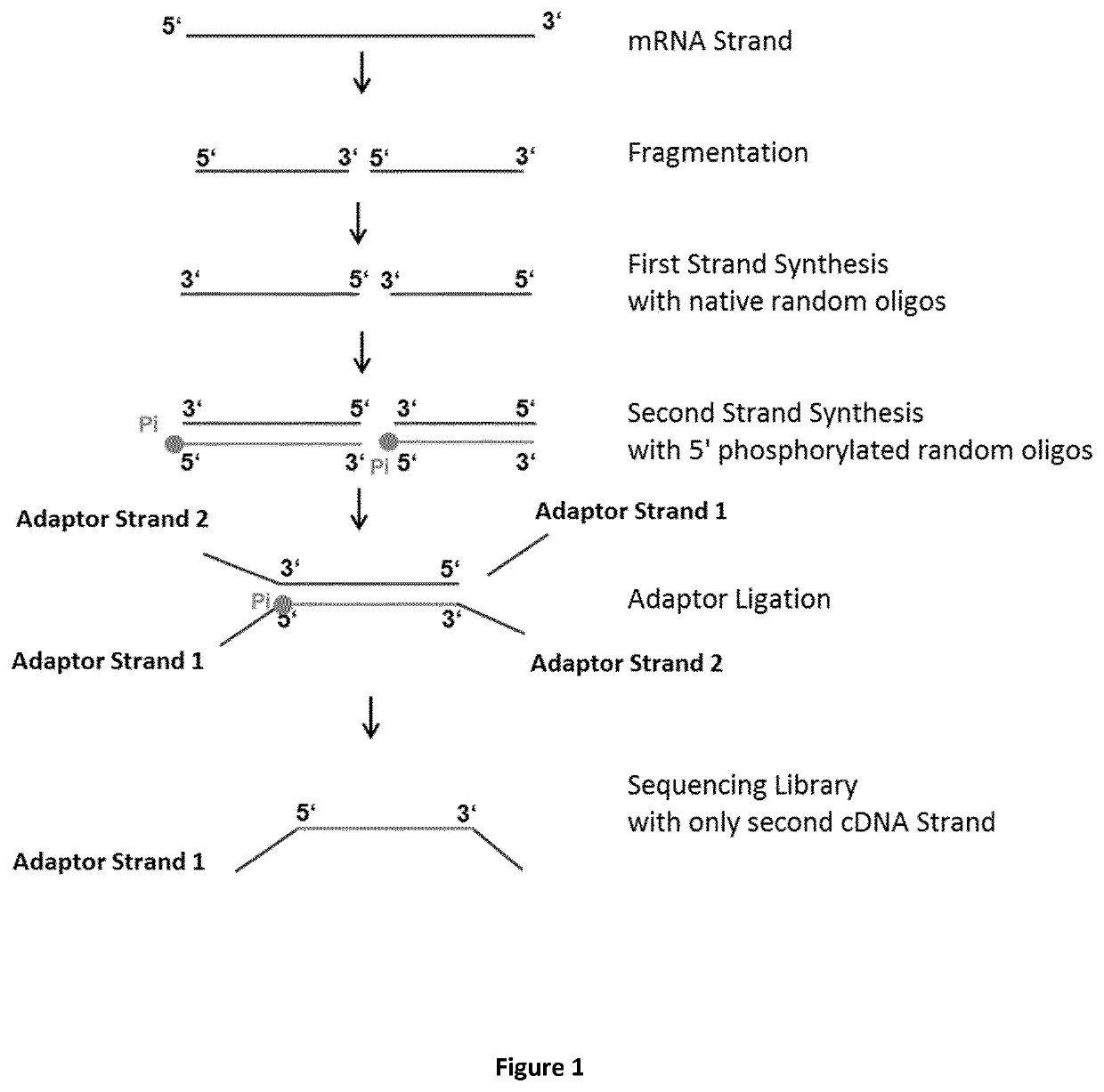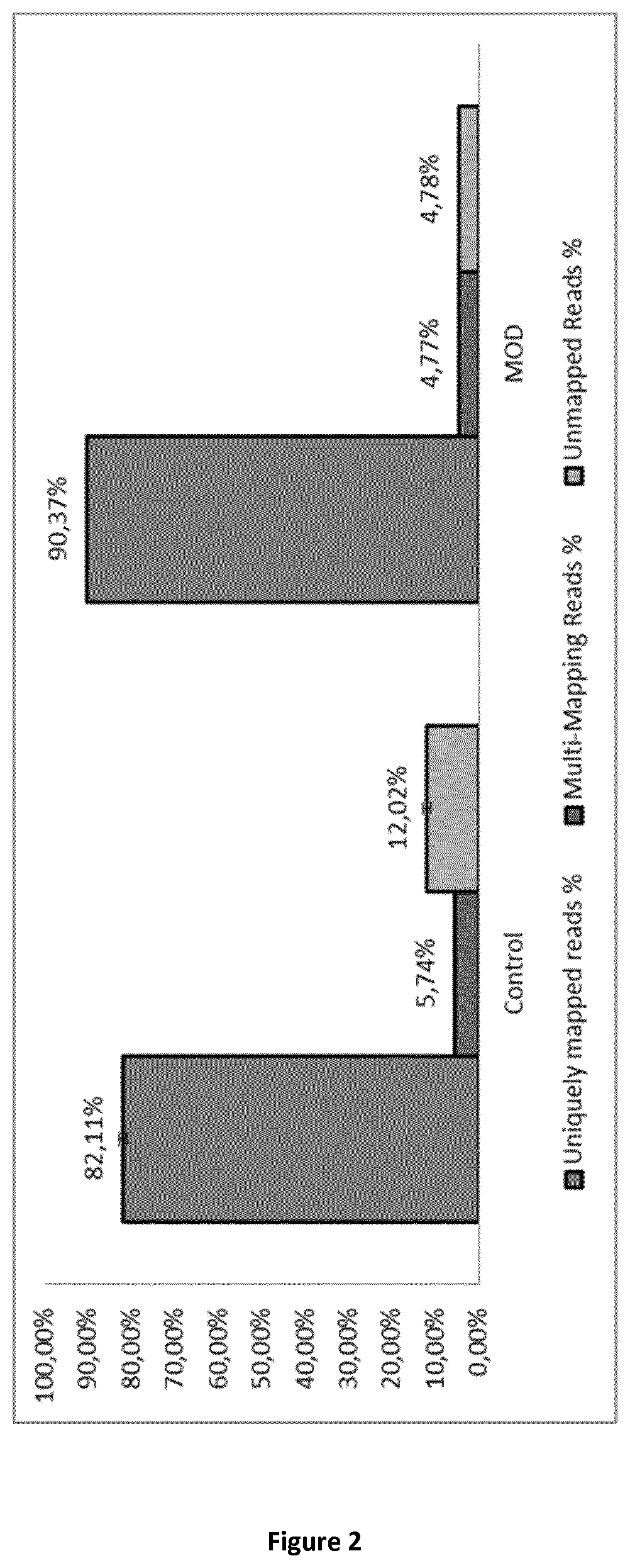Method for generating a stranded RNA library
a library and strand technology, applied in the field of molecular biology, can solve the problems of false interpretation of rna-seq data, complex library construction process, and insufficient efficiency of ung reaction
- Summary
- Abstract
- Description
- Claims
- Application Information
AI Technical Summary
Benefits of technology
Problems solved by technology
Method used
Image
Examples
examples
[0079]The following experiment was performed to prove the principle of the method according to the present invention. The total RNA from Jurkat cells (human) were extracted with RNeasy kit (QIAGEN) and the PolyA+ mRNA was enriched with the GeneRead Pure mRNA Kit (QIAGEN) and then used in each RNA-Seq Library Prep reaction following the protocol below:
[0080]18 μl of mRNA (total amount: 72 ng) was mixed with 8 μl Reverse Transcription Buffer (250 mM Tris base, 15 mM MgCl2, 375 mM KCl; final pH adjustment with HCl to pH 7.5) (5×), 2 μl random 8mer oligos (200 μM, IDT) and 2 μl H2O. The mRNA / random oligo mix was heated at 94° C. for 15 minutes to fragment the RNA to an average size of about 100-250 bp. After the heat-mediated fragmentation, the mix was cooled down on ice and the following reverse transcription (RT) components were added: 2 μl of RNAse Inhibitor (4 U / μl, QIAGEN), 2 μl of dNTPs (10 mM each, QIAGEN), 4 μl of DTT (0.1 M), and 2 μl H2O. The reaction volume was incubated for ...
PUM
| Property | Measurement | Unit |
|---|---|---|
| pH | aaaaa | aaaaa |
| volume | aaaaa | aaaaa |
| temperature | aaaaa | aaaaa |
Abstract
Description
Claims
Application Information
 Login to View More
Login to View More - R&D
- Intellectual Property
- Life Sciences
- Materials
- Tech Scout
- Unparalleled Data Quality
- Higher Quality Content
- 60% Fewer Hallucinations
Browse by: Latest US Patents, China's latest patents, Technical Efficacy Thesaurus, Application Domain, Technology Topic, Popular Technical Reports.
© 2025 PatSnap. All rights reserved.Legal|Privacy policy|Modern Slavery Act Transparency Statement|Sitemap|About US| Contact US: help@patsnap.com



